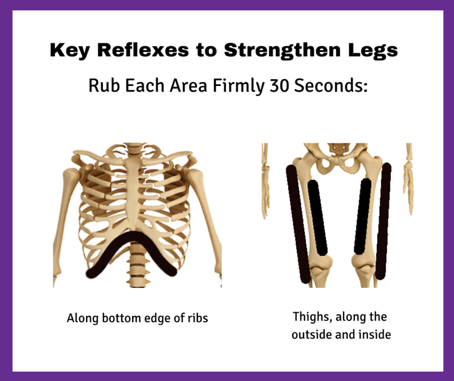3 Ways Muscles Support Digestion

Every single muscle of the body affects functions of your organs and glands. Read through till the end because I will share a brief powerful activity that supports vibrant health.
- Moms tell us to “take time to chew your food” Chewing thoroughly is an important chemical / mechanical process that stimulates saliva which is essential for the digestive process and breaks down food into smaller particles so that it doesn’t putrefy in the digestive tract. Using our jaw muscles longer before swallowing each bite helps prevent several degenerative health issues.
- Muscles function best in proper harmony with one another which allows us to stand and move easily. When muscles aren't communicating well they cause tension and pain and cause the body to lean, twist, tilt or slump. Having good posture allows internal organs to work without any pressure caused by twisting or slumping of the body.
Imagine being a stomach. How would you like to do your job while feeling the weight of the upper body collapsed onto you? If the stomach doesn’t do a good job it causes a lot of strain on the small intestine whose job is to continue breaking down food in order to absorb nutrients. The pancreas and gall bladder then have to work harder to provide more digestive juices than they should have to. In case you didn't know, when these organs work overtime, uncomfortable and unattractive bloating can occur.
Supporting digestion is key in regaining and maintaining great health. Simply remembering to chew and sit up straight contributes to greater wellness and vitality. - The next point is not common knowledge. We have reflexes located on the body which affect specific organs. Some of these communicate specifically with the small and large intestines. Because of the wonderful way our bodies are wired, simply activating these reflexes with fingertip pressure positively affects these organs, along with also contributing to greater abdominal and thigh muscle strength. This activity causes:
a) Your body to reboot at the neuromuscular level thus supporting these muscles in working more effectively. You should notice greater strength in the thigh muscles and find they tone faster than ever in response to exercise.
b) Increased lymphatic fluid flow in the related organs and greater flow through these muscle tissues. Lymph of course carries away waste products such as lactic acid. Say goodbye to painful muscles after exercise, and say hello to greater physical endurance.
* * * * * * * * * * * * * *
Many interesting reflex areas were mapped by Osteopathic Physician Dr. Frank Chapman who published his work in the 1930s. These are a neurological interface with the lymphatic system. In the 1960s chiropractor Dr. George Goodheart Jr. extended that information by observing that activating these reflexes also improved the function of specific muscles.

A few key reflexes are shown in the diagram above. As previously mentioned, these reflexes support your small and large intestines (colon) so simply choosing to activate them every day will help your digestion.
You can also activate these reflex areas to support the thigh muscles before physical activity so that you can do more with less effort. Furthermore, you will notice that afterwards you will feel less pain.
All that is required is to rub the flat of your fingers or the heel of your hand fairly firmly but not painfully along these areas. It does not matter if you rub with smooth strokes along the whole length of the zone or make little circles as you move from one end to the other end. You can activate reflexes singly or in pairs for at least 30 seconds each. You may even choose to activate them for up to three minutes if you perform really strenuous activities.
BONUS: If you ever notice you are sore the day after unaccustomed exercise just activate these reflex zones. You will notice the pain disappear in hours, not days!
A important bio-mechanical result of activating these reflexes is that it helps balance the pull of the opposing muscles on the front and back of the thigh which has a direct effect on the health of the knees. It brings the torque ratio into 1:1 tension which reduces chance of knee injury.
I have been called an ‘Easy-o-logist’ because I offer a simple approach to improving the function of bodies from head to foot and make it fast and convenient to learn. I’m always happy to have friendly conversations with those who are curious to learn more.
© 2022 Denise Cambiotti – Muscle Tuners International Inc.
